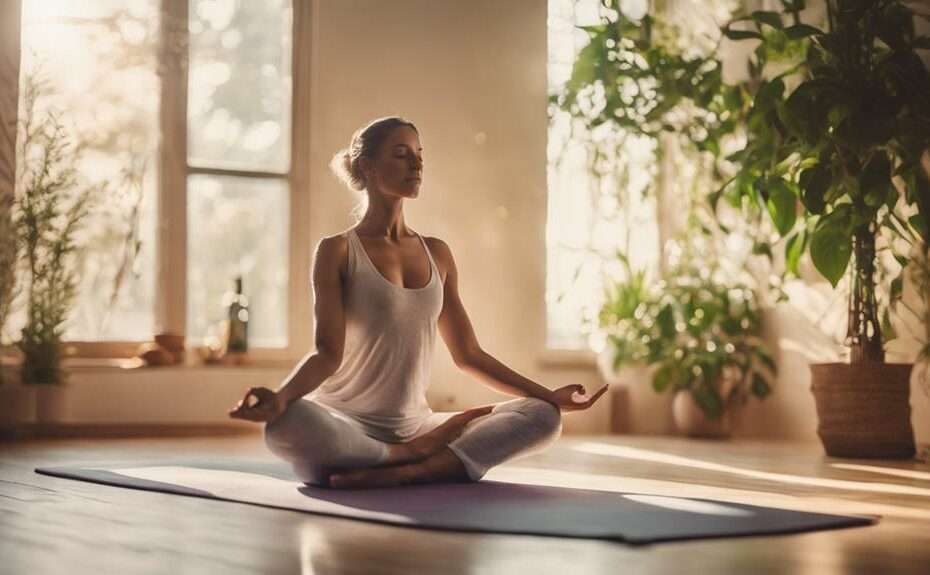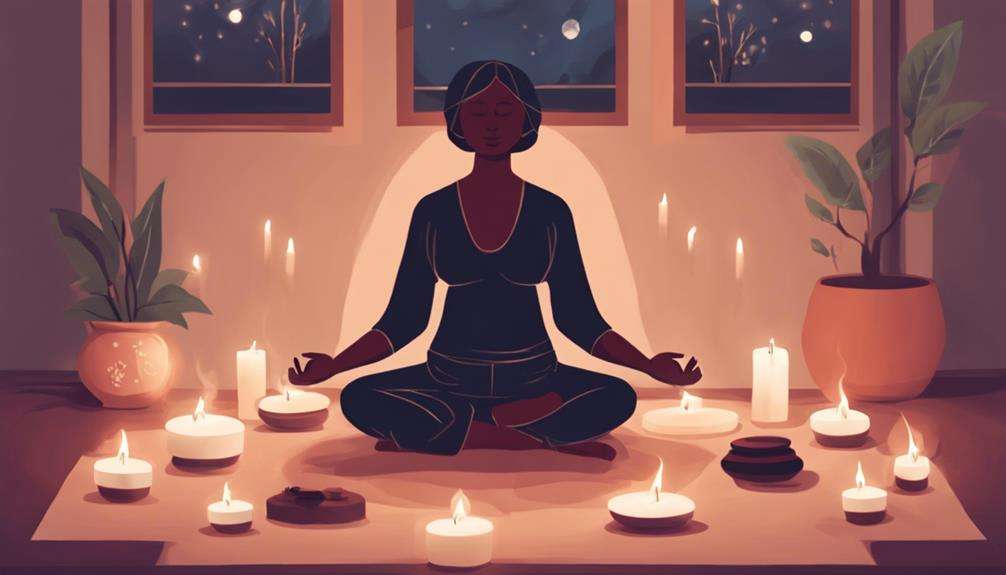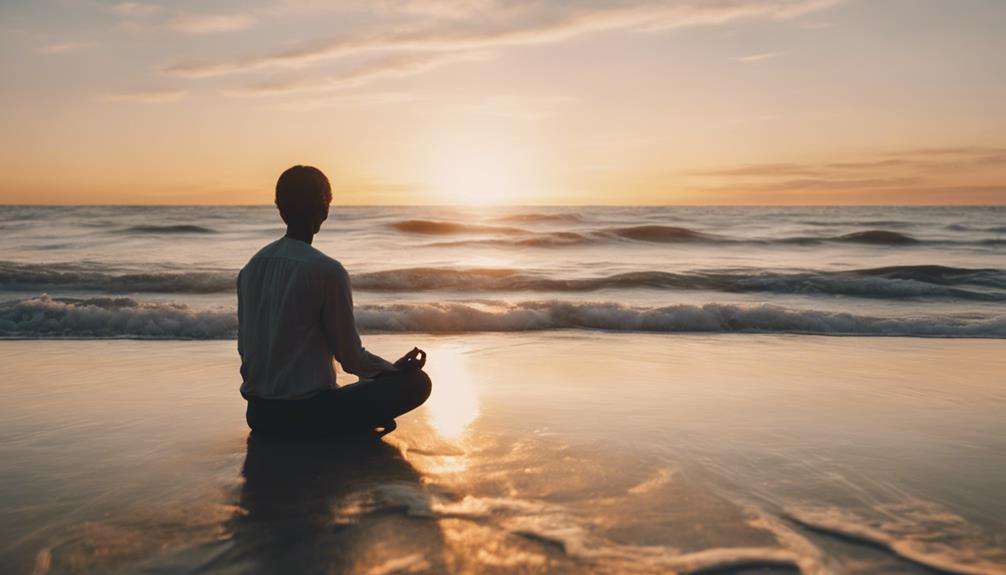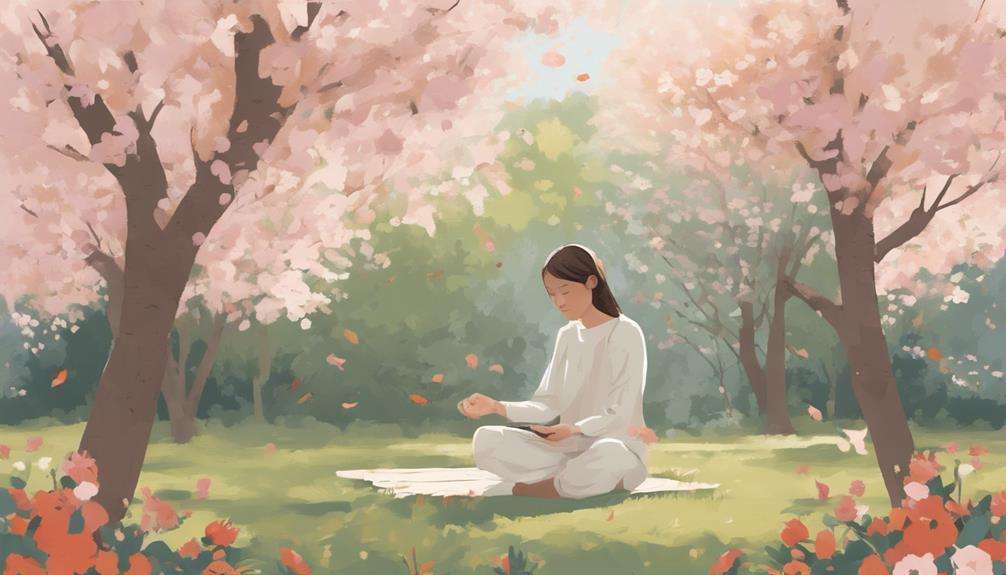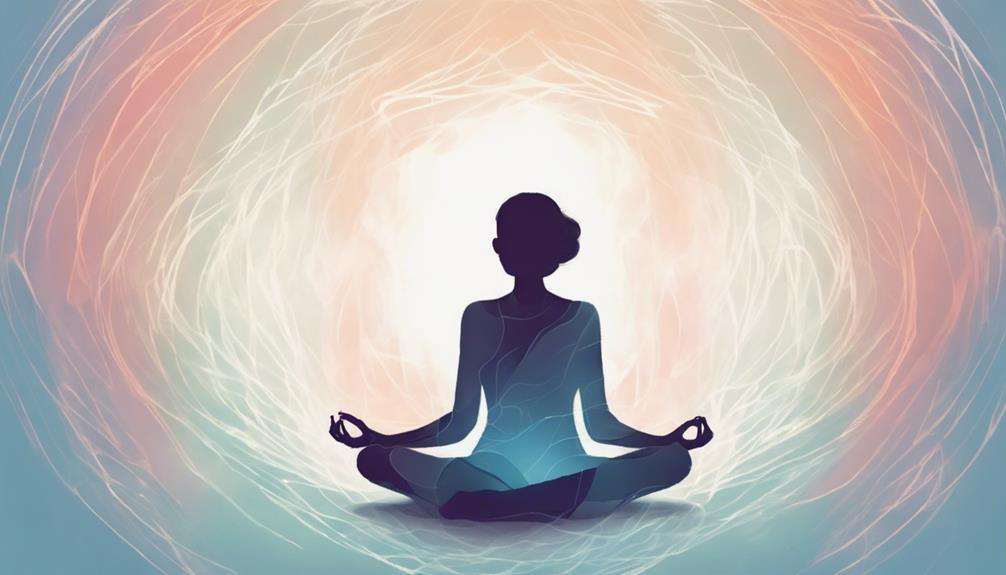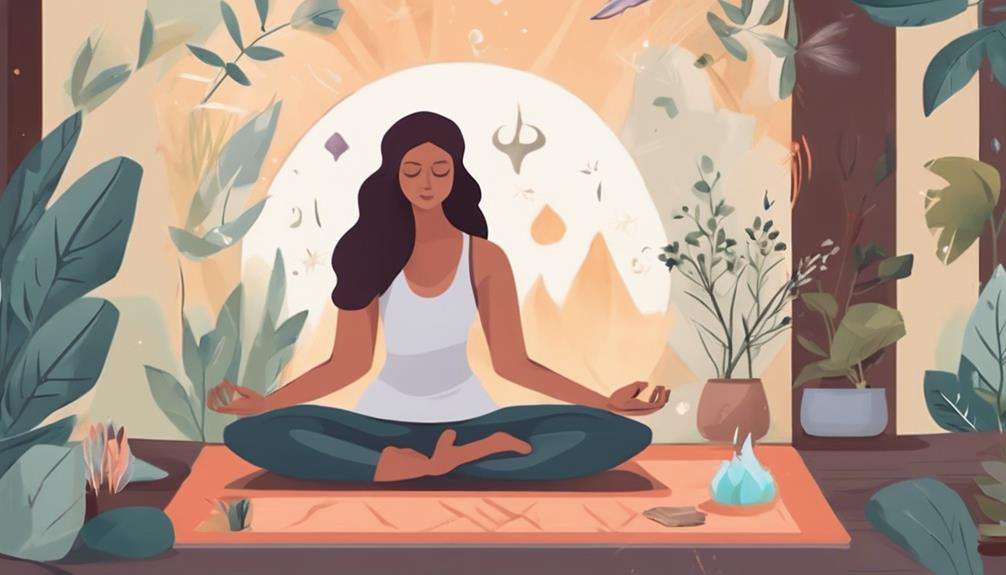When faced with the whirlwind of anxiety, have you ever considered finding solace in the stillness of a yoga practice?
Picture this: amidst the chaos of daily life, there exists a sanctuary where breath and movement intertwine to create a haven of peace and tranquility.
What if this sanctuary could hold the key to soothing your anxious mind and restoring a sense of calm within you?
Explore how calming yoga practices can offer a pathway to anxiety relief and relaxation, guiding you towards a newfound sense of inner harmony and balance.
Key Takeaways
- Yoga poses like Child's Pose and Fish Pose activate the vagus nerve for relaxation.
- Breath work techniques, such as deep breathing, calm the nervous system and reduce anxiety.
- Meditation practices like Mindfulness and Loving-Kindness Meditations promote inner peace.
- Seated and standing yoga poses improve balance, strength, and focus for overall well-being.
Yoga Poses for Vagus Nerve Stimulation
If you're looking to harness the power of yoga for anxiety relief, exploring specific poses that stimulate the vagus nerve can be incredibly beneficial. The Child's Pose, Extended Puppy Pose, and Fish Pose are excellent choices for vagus nerve stimulation, aiding in anxiety relief and stress management. These poses not only help in calming the mind but also work towards enhancing heart rate variability, which is key to balancing the autonomic nervous system.
The Child's Pose gently compresses the abdomen, promoting relaxation and activating the vagus nerve. Similarly, the Extended Puppy Pose opens up the chest and elongates the spine, facilitating deep breathing and vagus nerve stimulation. Lastly, the Fish Pose, with its gentle backbend, not only alleviates tension but also encourages the relaxation response by engaging the vagus nerve.
Incorporating these yoga poses into your practice can significantly contribute to vagus nerve stimulation, ultimately supporting your mental well-being and providing you with effective tools for managing anxiety.
Breath Work for Mind-Body Connection
To deepen your mind-body connection and enhance your overall well-being, practicing breath work through specific techniques in yoga can be immensely beneficial. Breath regulation, known as Pranayama techniques, plays a vital role in calming the sympathetic nervous system.
Deep breathing patterns, when done steadily, are effective in reducing anxiety and promoting relaxation. Techniques like alternate nostril breathing are particularly helpful in calming both the mind and body, fostering a sense of calmness and well-being.
Through Pranayama, the vagus nerve is stimulated, influencing heart rate variability and promoting overall relaxation. By incorporating breath work into your yoga practices, you not only enhance your mind-body connection but also create a space for anxiety reduction and calmness promotion.
Embrace the power of breath work in yoga to nurture your well-being and find inner peace.
Meditation Techniques for Relaxation

Enhance your relaxation and reduce anxiety by exploring various meditation techniques, such as mindfulness meditation and loving-kindness meditation. Meditation is a powerful tool that can help you find inner peace and calmness amidst the storm of anxiety. Here are some techniques to incorporate into your routine:
- Mindfulness Meditation: Focus on the present moment, observe your thoughts without judgment, and let them pass by like clouds in the sky.
- Loving-Kindness Meditation: Cultivate feelings of compassion and love towards yourself and others, fostering a sense of connection and well-being.
- Deep Breaths: Combine deep breathing exercises with meditation to activate the body's relaxation response, calming your nervous system and reducing stress levels.
- Promote Relaxation: Regular practice of meditation can lead to improved mental clarity, decreased anxiety symptoms, and an overall sense of relaxation and well-being. Take time each day to quiet your mind and nurture your inner peace through these calming practices.
Seated and Standing Yoga Poses
Explore the calming benefits of seated and standing yoga poses to enhance your body awareness and promote physical and mental well-being.
Seated yoga poses like Hero Pose and Seated Forward Bend provide a grounding sensation, helping to relax your body and mind.
On the other hand, standing yoga poses such as Tree Pose and Triangle Pose focus on building strength and fostering stability within your body. These poses work on engaging different muscle groups, which not only enhances body awareness but also improves alignment.
By incorporating a mix of seated and standing poses into your yoga routine, you can enhance your balance, focus, and overall sense of well-being.
Restorative Poses for Anxiety Relief
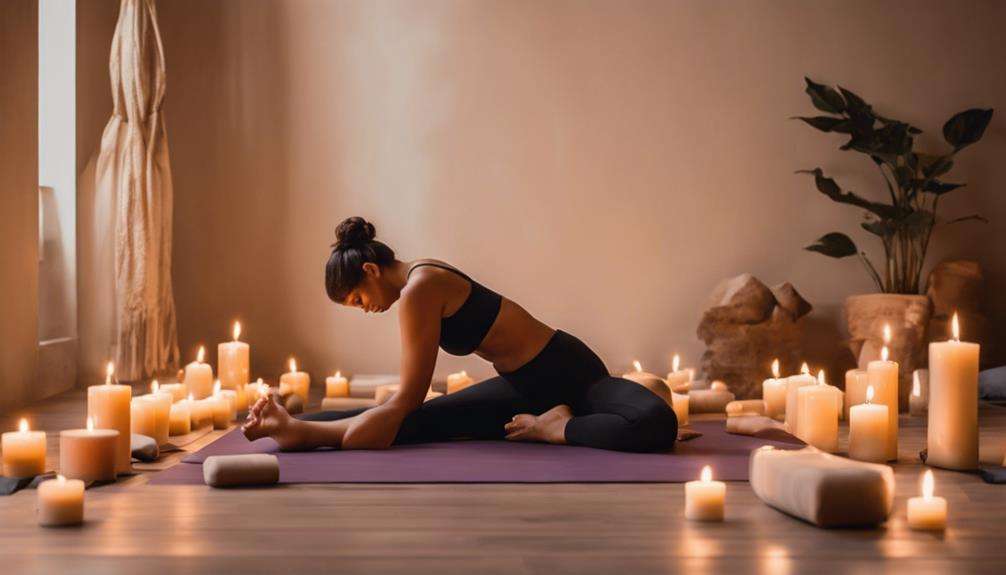
Experience deep relaxation and stress relief through restorative yoga poses like Legs-Up-the-Wall and Head-to-Knee Forward Bend. These poses are specifically designed to help you find inner peace and calmness by focusing on gentle stretching and supported postures.
Here are four ways restorative poses can benefit you:
- Calming the Nervous System: Restorative yoga aids in soothing your nervous system, reducing anxiety, and promoting a sense of tranquility.
- Releasing Tension: By practicing restorative poses, you can release physical and mental tension, allowing your body and mind to unwind.
- Deep Relaxation: Through the use of props like blankets and blocks, restorative poses facilitate deep relaxation, helping you let go of stress and worries.
- Enhancing Inner Peace: Incorporating restorative yoga into your routine can create a nurturing environment that fosters inner peace and emotional balance.
Frequently Asked Questions
Which Yoga Is Best for Remove Anxiety?
For removing anxiety, focus on yoga that emphasizes breathing techniques, gentle poses, and grounding exercises. These practices help strengthen the mind-body connection, promote self-care, and aid in stress relief. Yoga therapy offers valuable tools for emotional balance and mental wellness.
How Yoga Cured My Anxiety?
You might be surprised how yoga tackled your anxiety. The mind-body connection, breath work, and self-care led your healing journey. Yoga gifted you inner peace, mental health, stress relief, and emotional balance. Its relaxation techniques fostered a positive mindset.
When Is the Best Time to Do Yoga for Anxiety?
For anxiety relief, best times to practice yoga are morning routine, midday flow, before bed. These moments calm your mind, relax your body, and set a positive tone. Consistent practice at any time helps manage anxiety and boost well-being.
Which Yoga Exercise Will You Practice if You Want to Be Relieved From Anxiety Stress and Tension Why?
When you want relief from anxiety stress and tension, consider practicing Child's pose. It promotes relaxation through deep breathing and gentle stretching, calming your mind and body. Embrace this soothing pose to find peace within yourself.
Conclusion
As you breathe deeply and flow through gentle movements, you're like a calm river, washing away anxiety and stress.
The soothing practice of yoga wraps you in a blanket of relaxation, allowing your mind to find peace and your body to release tension.
Embrace these calming yoga practices as a sanctuary for your soul, a refuge from the chaos of everyday life.
Trust in the power of yoga to bring tranquility and balance to your being.
